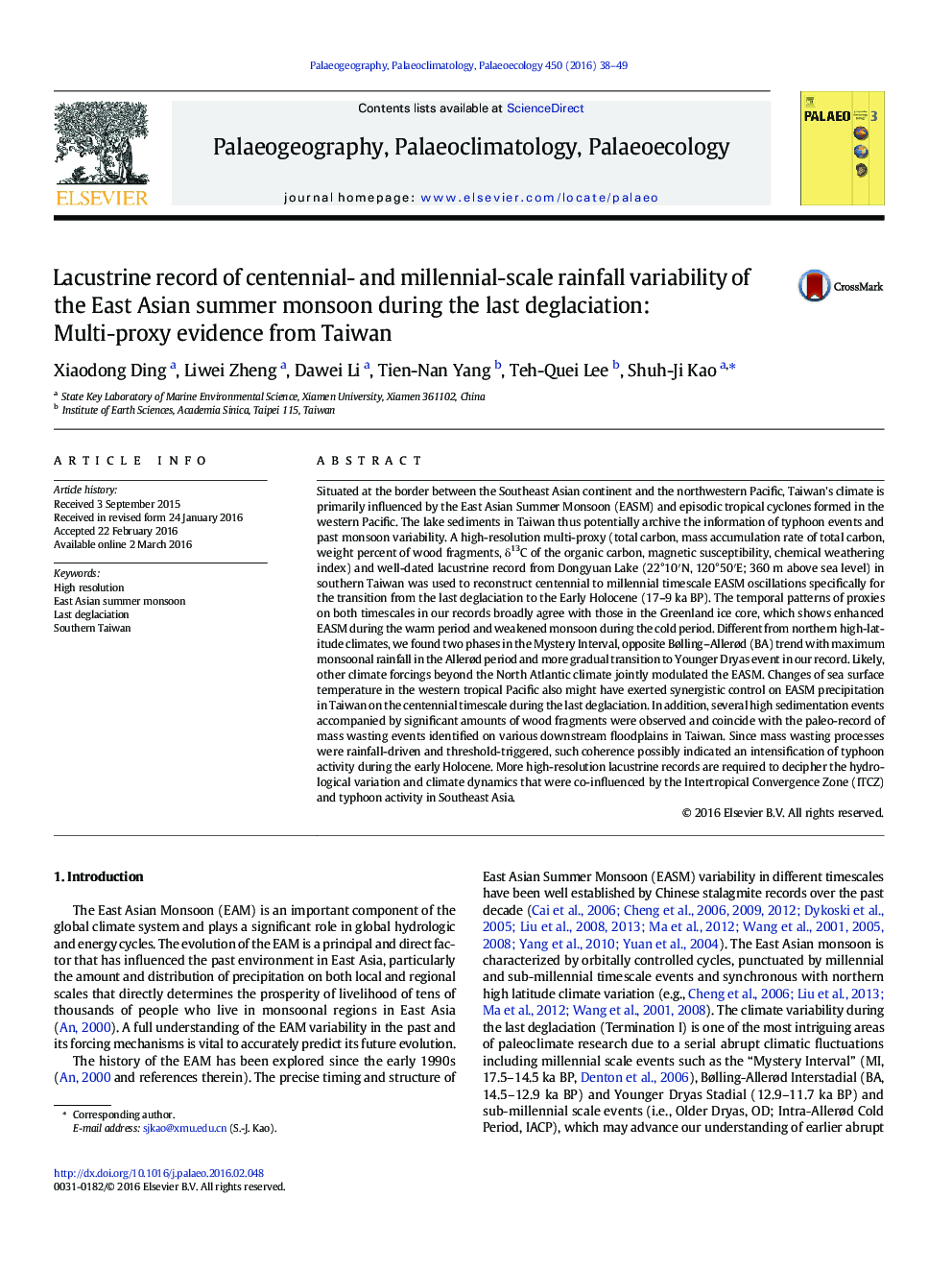| Article ID | Journal | Published Year | Pages | File Type |
|---|---|---|---|---|
| 4465734 | Palaeogeography, Palaeoclimatology, Palaeoecology | 2016 | 12 Pages |
•The EASM variability during the last deglaciation was reconstructed based on high-resolution multi-proxy and well-dated lacustrine records from Taiwan.•The detailed information of the millennial- and centennial-scale oscillations of the EASM were unraveled.•The variation of SST in the tropical Pacific might have synergistic control on the EASM precipitation in Taiwan on centennial timescale during the last deglaciation.•High sedimentation events during the early Holocene in our record probably related to frequent typhoon activities.
Situated at the border between the Southeast Asian continent and the northwestern Pacific, Taiwan's climate is primarily influenced by the East Asian Summer Monsoon (EASM) and episodic tropical cyclones formed in the western Pacific. The lake sediments in Taiwan thus potentially archive the information of typhoon events and past monsoon variability. A high-resolution multi-proxy (total carbon, mass accumulation rate of total carbon, weight percent of wood fragments, δ13C of the organic carbon, magnetic susceptibility, chemical weathering index) and well-dated lacustrine record from Dongyuan Lake (22°10′N, 120°50′E; 360 m above sea level) in southern Taiwan was used to reconstruct centennial to millennial timescale EASM oscillations specifically for the transition from the last deglaciation to the Early Holocene (17–9 ka BP). The temporal patterns of proxies on both timescales in our records broadly agree with those in the Greenland ice core, which shows enhanced EASM during the warm period and weakened monsoon during the cold period. Different from northern high-latitude climates, we found two phases in the Mystery Interval, opposite Bølling–Allerød (BA) trend with maximum monsoonal rainfall in the Allerød period and more gradual transition to Younger Dryas event in our record. Likely, other climate forcings beyond the North Atlantic climate jointly modulated the EASM. Changes of sea surface temperature in the western tropical Pacific also might have exerted synergistic control on EASM precipitation in Taiwan on the centennial timescale during the last deglaciation. In addition, several high sedimentation events accompanied by significant amounts of wood fragments were observed and coincide with the paleo-record of mass wasting events identified on various downstream floodplains in Taiwan. Since mass wasting processes were rainfall-driven and threshold-triggered, such coherence possibly indicated an intensification of typhoon activity during the early Holocene. More high-resolution lacustrine records are required to decipher the hydrological variation and climate dynamics that were co-influenced by the Intertropical Convergence Zone (ITCZ) and typhoon activity in Southeast Asia.
